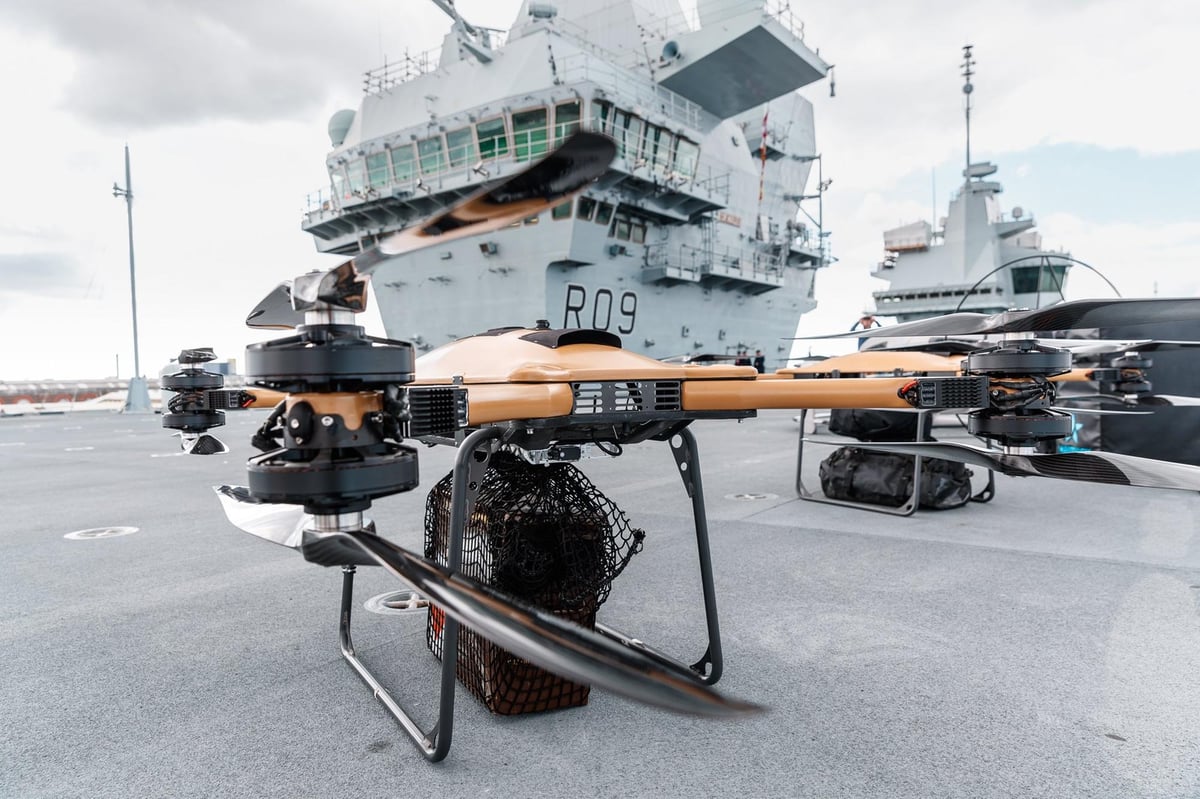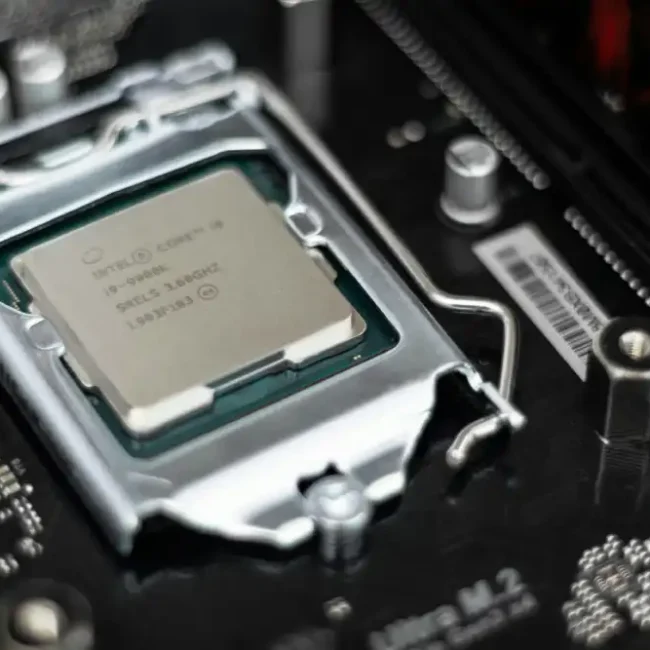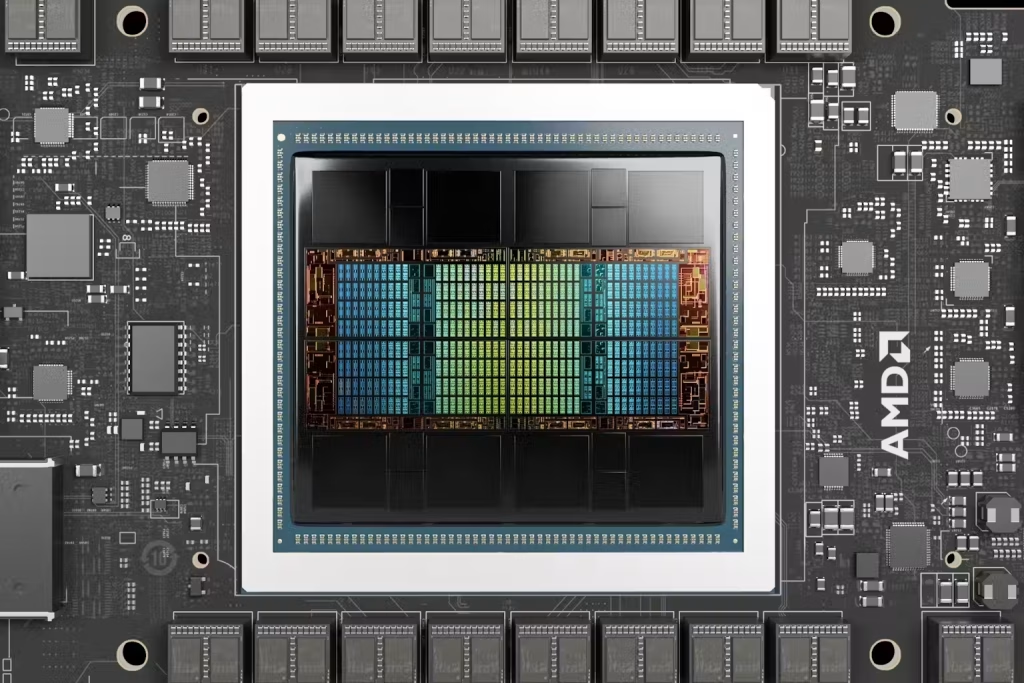The Big Shift: “Uncrewed When Possible, Crewed When Necessary”
At DSEI 2025, First Sea Lord Gen. Gwyn Jenkins laid out a radical reorientation of the Navy’s doctrine. The aim: transform the fleet from a peacetime posture to full war-fighting readiness within four years. The guiding principle is now explicit — uncrewed platforms will be the default, with crewed assets deployed only when absolutely necessary.
This change isn’t theoretical. The Navy has already demonstrated operational drones delivering logistics ship-to-ship during deployments, embedding autonomy into daily operations. The intent is to hardwire unmanned systems across logistics, surveillance, strike, and mine countermeasure missions.
Hybrid Air Wings & Naval Autonomy
Plans are progressing for “hybrid air wings” that will mix uncrewed drones with traditional helicopters aboard carriers. By the end of the decade, Royal Navy carriers are expected to routinely launch both manned and unmanned aircraft, allowing human pilots to focus on complex combat while drones handle reconnaissance and strike augmentation.
At sea, uncrewed surface and subsurface vehicles are being prioritized. Mine-hunting missions are shifting to autonomous craft that reduce human risk in contested waters. Submarine autonomy is also advancing, with prototypes of fully uncrewed submarines planned for operational deployment within a few years.
Modular Support, Fleet Scalability, and Automation
The Navy is embracing modular design concepts — containerized mission systems (often referred to as “NavyPODS”) that allow ships to swap capabilities quickly. This could mean shifting a vessel from surveillance to strike roles in days, rather than months.
Support vessels are being reconfigured as motherships for drones, such as converted auxiliary ships that now deploy autonomous mine-hunting craft. Meanwhile, new ocean surveillance ships are being optimized for seabed defense and subsea drone operations.
The end-state: a fleet where adaptability and rapid reconfiguration become the decisive advantage.
Capability Realignment to Fund the Future
This pivot is being financed through tough trade-offs. The Navy has retired older helicopters, amphibious assault ships, and legacy vessels to redirect resources toward autonomous systems. The calculus is clear — fewer but more capable ships, heavily augmented by unmanned partners.
This realignment highlights a broader recognition: the UK cannot afford to match global peers ship-for-ship. Instead, it must rely on leaner, technology-heavy assets that deliver outsized deterrence.
Timeline and Strategic Targets
- Now–2029: Rapid integration of uncrewed systems and modular pods across the surface fleet.
- By 2030: Hybrid carrier air wings operational; first uncrewed submarines in service.
- 2030s and beyond: Rollout of multi-role support ships and new destroyers built around modularity and autonomy from the keel up.
Why It Matters
- Industrial Impact: Companies like BAE, Babcock, QinetiQ, and emerging autonomy startups stand to benefit from R&D contracts and scaling production of naval drones, pods, and hybrid air systems.
- Workforce & Cost Efficiency: Smaller crews, supported by uncrewed platforms, reduce manpower pressures and long-term operating costs.
- Investor Angle: The focus on autonomy signals where procurement money will flow over the next decade. Investors tracking defense equities with exposure to naval autonomy, modularity, and uncrewed subsystems may see upside.
- Strategic Posture: This shift boosts UK resilience in contested zones like the Indo-Pacific, allowing greater reach with fewer sailors and hulls — a pragmatic answer to resource constraints.
Final Word
The Royal Navy’s rebuild is no longer about incrementally adding ships. It’s about a paradigm shift: modular, uncrewed, and hybrid fleets that are cheaper to crew, quicker to adapt, and more resilient under threat. For policymakers, industry, and investors alike, the autonomy pivot is now the central storyline of UK maritime power.





